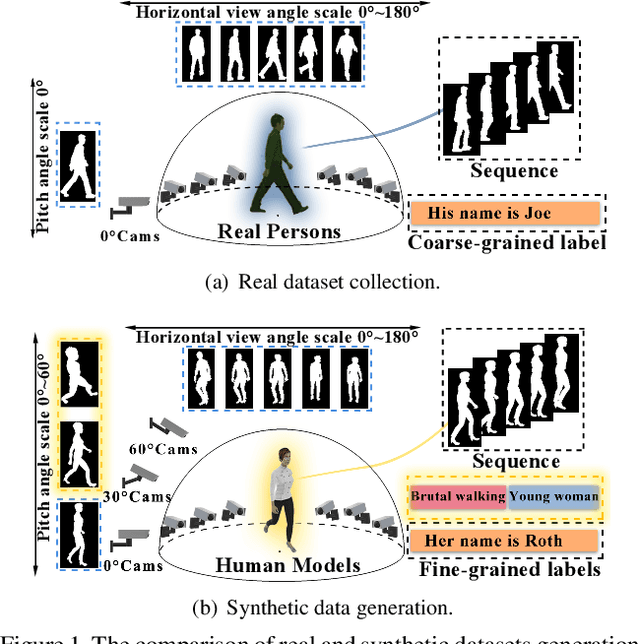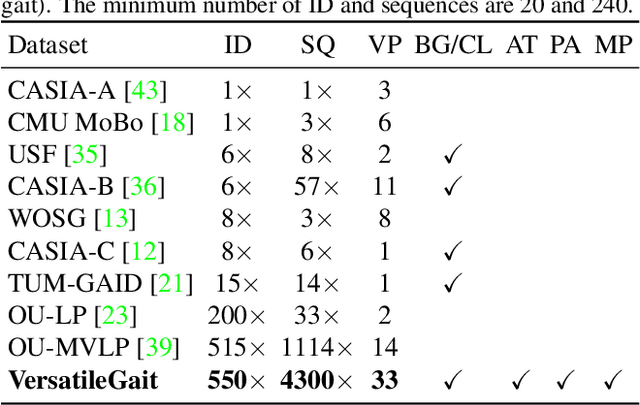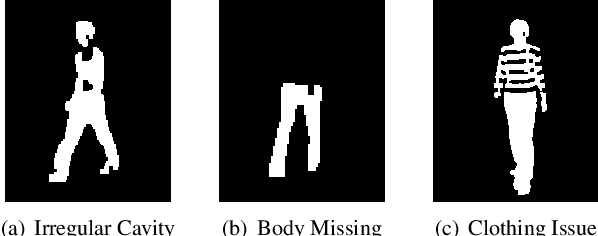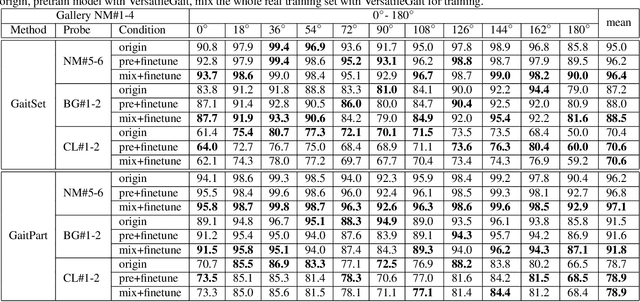Lin Dong
GaitMPL: Gait Recognition with Memory-Augmented Progressive Learning
Jun 06, 2023Abstract:Gait recognition aims at identifying the pedestrians at a long distance by their biometric gait patterns. It is inherently challenging due to the various covariates and the properties of silhouettes (textureless and colorless), which result in two kinds of pair-wise hard samples: the same pedestrian could have distinct silhouettes (intra-class diversity) and different pedestrians could have similar silhouettes (inter-class similarity). In this work, we propose to solve the hard sample issue with a Memory-augmented Progressive Learning network (GaitMPL), including Dynamic Reweighting Progressive Learning module (DRPL) and Global Structure-Aligned Memory bank (GSAM). Specifically, DRPL reduces the learning difficulty of hard samples by easy-to-hard progressive learning. GSAM further augments DRPL with a structure-aligned memory mechanism, which maintains and models the feature distribution of each ID. Experiments on two commonly used datasets, CASIA-B and OU-MVLP, demonstrate the effectiveness of GaitMPL. On CASIA-B, we achieve the state-of-the-art performance, i.e., 88.0% on the most challenging condition (Clothing) and 93.3% on the average condition, which outperforms the other methods by at least 3.8% and 1.4%, respectively.
MDA GAN: Adversarial-Learning-based 3-D Seismic Data Interpolation and Reconstruction for Complex Missing
Apr 08, 2022



Abstract:The interpolation and reconstruction of missing traces is a crucial step in seismic data processing, moreover it is also a highly ill-posed problem, especially for complex cases such as high-ratio random discrete missing, continuous missing and missing in fault-rich or salt body surveys. These complex cases are rarely mentioned in current sparse or low-rank priorbased and deep learning-based approaches. To cope with complex missing cases, we propose Multi-Dimensional Adversarial GAN (MDA GAN), a novel 3-D GAN framework. It employs three discriminators to ensure the consistency of the reconstructed data with the original data distribution in each dimension. The feature splicing module (FSM) is designed and embedded into the generator of this framework, which automatically splices the features of the unmissing part with those of the reconstructed part (missing part), thus fully preserving the information of the unmissing part. To prevent pixel distortion in the seismic data caused by the adversarial learning process, we propose a new reconstruction loss Tanh Cross Entropy (TCE) loss to provide smoother gradients. We experimentally verified the effectiveness of the individual components of the study and then tested the method on multiple publicly available data. The method achieves reasonable reconstructions for up to 95% of random discrete missing, 100 traces of continuous missing and more complex hybrid missing. In surveys of fault-rich and salt bodies, the method can achieve promising reconstructions with up to 75% missing in each of the three directions (98.2% in total).
VersatileGait: A Large-Scale Synthetic Gait Dataset with Fine-GrainedAttributes and Complicated Scenarios
Jan 05, 2021



Abstract:With the motivation of practical gait recognition applications, we propose to automatically create a large-scale synthetic gait dataset (called VersatileGait) by a game engine, which consists of around one million silhouette sequences of 11,000 subjects with fine-grained attributes in various complicated scenarios. Compared with existing real gait datasets with limited samples and simple scenarios, the proposed VersatileGait dataset possesses several nice properties, including huge dataset size, high sample diversity, high-quality annotations, multi-pitch angles, small domain gap with the real one, etc. Furthermore, we investigate the effectiveness of our dataset (e.g., domain transfer after pretraining). Then, we use the fine-grained attributes from VersatileGait to promote gait recognition in both accuracy and speed, and meanwhile justify the gait recognition performance under multi-pitch angle settings. Additionally, we explore a variety of potential applications for research.Extensive experiments demonstrate the value and effective-ness of the proposed VersatileGait in gait recognition along with its associated applications. We will release both VersatileGait and its corresponding data generation toolkit for further studies.
 Add to Chrome
Add to Chrome Add to Firefox
Add to Firefox Add to Edge
Add to Edge